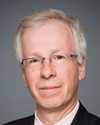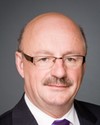Thank you, Mr. Chair.
I would like to thank the members of the committee for inviting Statistics Canada to appear before you to provide input to your reflection on the evolution of linguistic duality as we approach the 150th anniversary of Canada’s Confederation in 2017.
As you know, on October 24th, Statistics Canada released the language results from the 2011 Census of Population. That release highlighted two key elements of Canada’s linguistic portrait—the country’s linguistic diversity and duality.
Canada’s linguistic diversity is illustrated by the fact that more than 200 languages were reported as a home language or mother tongue in the 2011 Census of Population. The country’s linguistic duality is reflected in the fact that 98% of its population reported that it was able to conduct a conversation in either English or French. Similarly, either English or French are spoken at least on a regular basis at home in Canada by 94% of the population and are spoken most often at home by 89% of the population.
I would like to point out that during the 1871 census, only four years after the creation of the Canadian Confederation, Canada’s total population—based on the current territory—was about 3.8 million people. At that time, no question on language was asked in the census but we know that about 62% of the country’s population was comprised of people of British origin, 29% of French origin and 9% of other origins, including Amerindian.
In 2011, 140 years later, 20.6% of the Canadian population, or 6.8 million people, reported having a language other than English or French as their mother tongue, that is, as the language first learned at home during childhood and still understood at the time of the census. Among this population, native languages were reported by just over 213,000 people. In comparison, English was the mother tongue of 57.8% of the population, and French was the mother tongue of 21.7% of the population. As for the languages spoken most often at home, 66.3% of the population reported speaking English, 21% French and 12.6% a language other than the country’s two official languages.
Although the demographic weight of the population with a mother tongue other than English or French is almost identical to that of the French mother-tongue population, this group consists of more than 200 languages and is therefore far from homogeneous. In fact, the language reported most often as a mother tongue is Punjabi, a language reported by 460,000 people, or 1.4% of the Canadian population.
Among the other language groups in 2011 with a population of more than 300,000 people are Chinese, Spanish, Italian, German, Cantonese, Tagalog—a language from the Philippines—and Arabic.
More than 80% of the population that reported speaking an immigrant language most often at home lived in one of Canada’s six major metropolitan areas—namely, Toronto, Montreal, Vancouver, Calgary, Edmonton, and Ottawa-Gatineau.
While Canada is increasingly diversified linguistically, its two official languages, French and, to a greater extent, English, exert a strong pull as languages of convergence and integration into Canadian society, especially as languages of work, education, and the provision of government services to the public.
The two official languages also exert an influence on the languages spoken at home. In 2011, of the roughly 6.6 million Canadians who reported speaking a language other than English or French at home, 68% reported also speaking English or French most often or regularly.
In addition, although the proportion of the Canadian population that reported speaking only English or French at home is decreasing, mainly due to the growth in international immigration, the proportion that reported speaking English or French in combination with a non-official language is on the rise. In 2011, 17.3% of Canadians reported speaking an official language in combination with a non-official language, up from 12.8% 10 years earlier.
Although linguistic duality is at the heart of Canada’s linguistic dynamic, the 2011 census data show that the influence exerted by English and French varies from region to region across the country.
While the demographic weight of persons speaking English at home or having English as their first official language is on the rise, that of the population speaking French at home or for whom this language is the first official language continues to decrease.
In the past 30 years, between 1981 and 2011, the Canadian population has increased nearly 38%. By comparison, the population whose mother tongue is French grew 16%. The population with French as the language spoken most often at home or as first official language spoken increased by 17.6% and 21.3% respectively.
In the past 30 years, the growth in the population who have reported being able to conduct a conversation in French, that is, 30%, was the most similar to the growth of the overall Canadian population, which was 37.5%. During this period, this population increased from about 7.7 million to about 10 million people.
The evolution of French and the francophonie in Canada can be explained by a number of factors. Aside from a low fertility rate and, outside Quebec, incomplete transmission of French as a mother tongue to the children of French-speaking parents, international immigration has the strongest effect on the evolution of French in Canada. On average, over the last 20 years, roughly 235,000 new immigrants have come to Canada each year, more than 80% of whom have neither English nor French as their mother tongue.
In general, of the country’s two official languages, a large majority of these immigrants know only English and use it at work and in their daily lives. Accordingly, over time it is usually English that is used in the homes of immigrants outside Quebec. Of the some 200,000 immigrants who settle outside Quebec each year, slightly less than 2% have French as their first official language spoken.
In Quebec, French has also experienced a decline in its demographic weight as mother tongue and language spoken most often at home. In contrast, the portion of the population having French as its first official language spoken in that province has remained relatively stable, a factor attributable to the fact that a growing number of people with an immigrant mother tongue tend to adopt French as the language of use in the private and public spheres. As to the relative share of English in this province, it has increased slightly or remained stable as mother tongue, home language, or first official language spoken.
We have mentioned that linguistic duality in Canada is illustrated by the fact that 98% of the population reported being able to conduct a conversation in English or French. We should mention that in 2011 the share of the population that reported being able to conduct a conversation in French was 30.1%, down from the 30.7% in 2006. In contrast, the percentage of the population that reported being able to speak English was 85.6% in 2011, up from 85.1% in 2006.
Linguistic duality is also expressed by the self-reported ability to speak both of the country’s official languages. Between 2006 and 2011, the number of persons who reported that they were able to conduct a conversation in both of Canada’s official languages increased by nearly 350,000 people to 5.8 million. The English-French bilingualism rate within the overall population went from 17.4% to 17.5%. This growth of English-French bilingualism in Canada was mainly due to the increased number of Quebeckers reporting that they were able to conduct a conversation in English and French. In fact, Quebec accounted for 90% of the net increase in the number of bilingual persons between 2006 and 2011. In Quebec, the English-French bilingualism rate increased from 40.6% in 2006 to 42.6% in 2011. In the other provinces, bilingualism declined slightly. The largest decreases were recorded in Ontario, Manitoba and British Columbia, where, in each case, the bilingualism rate decreased by half a percentage point.
The acquisition of French as a second language remains a challenge in Canada outside Quebec. Given that French is generally learned at school, the bilingualism rate reaches its peak in the 15 to 19 age group. Many of these young people are completing secondary school, having been in French-as-a-second-language or immersion programs.
Since 1996, bilingualism has been losing ground among youth with English as their first official language spoken. The proportion of these youth able to conduct a conversation in both of the country’s official languages was 15.2% in 1996. It has decreased steadily since then to 11.2% in 2011, a decline of four percentage points.
Despite a rise in the number of youth registered in French-as-a-second-language immersion programs in the past 20 years outside Quebec, the number of young people in primary and secondary school exposed to French instruction has decreased. Since the 1991-1992 school year, the number of children registered in immersion programs has increased from 267,000 to almost 329,000, a growth rate of 23%. In contrast, the number of youth registered in a regular French-as-a-second-language program has decreased from 1.8 million to 1.38 million, a negative rate of 23%. In short, despite a rise in immersion program registrations, the proportion of young people outside Quebec exposed to the instruction of French as a second language over the past 20 years has decreased from 53.3% to 44%.
The loss in the ability to maintain the knowledge of French among youths who have learned French and the fact that immigrants are less likely to be able to conduct a conversation in that language explains in part the decrease in English-French bilingualism outside of Quebec.
The census data are an important source of information for monitoring the evolution of the language situation.
In concluding, I would like to mention that in 2017, year of the 150th anniversary celebrations of Canadian Confederation, Statistics Canada will be releasing the results from the 2016 census on language. Rest assured that Statistics Canada will continue to make every effort to inform Canadians on this key aspect of the country’s population.
Thank you.




